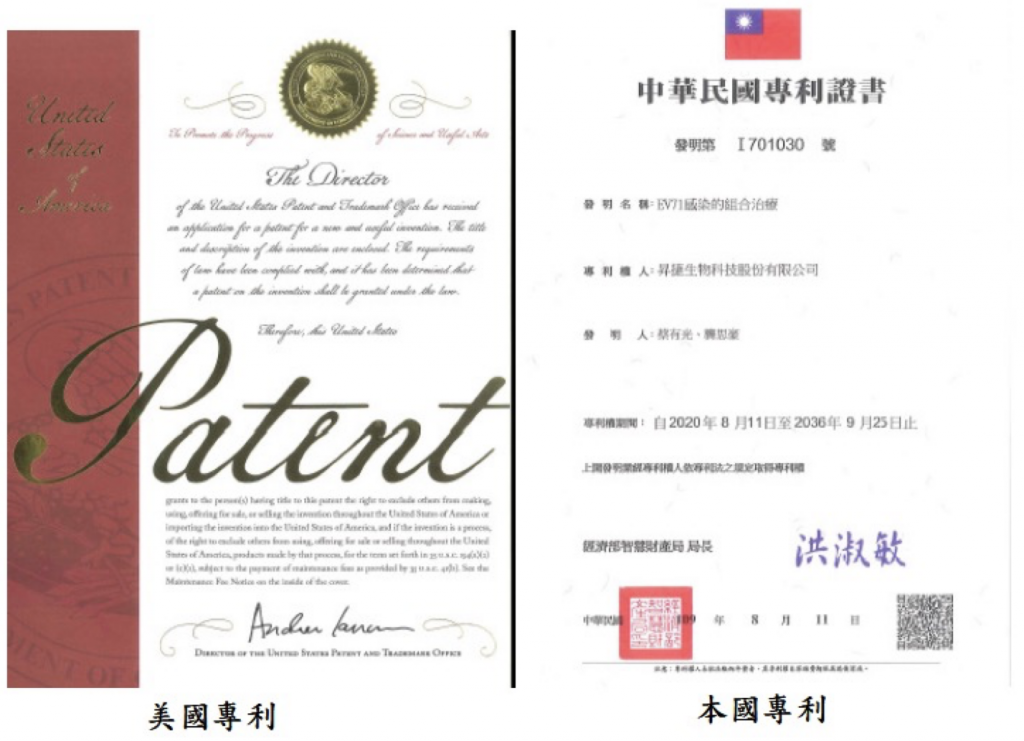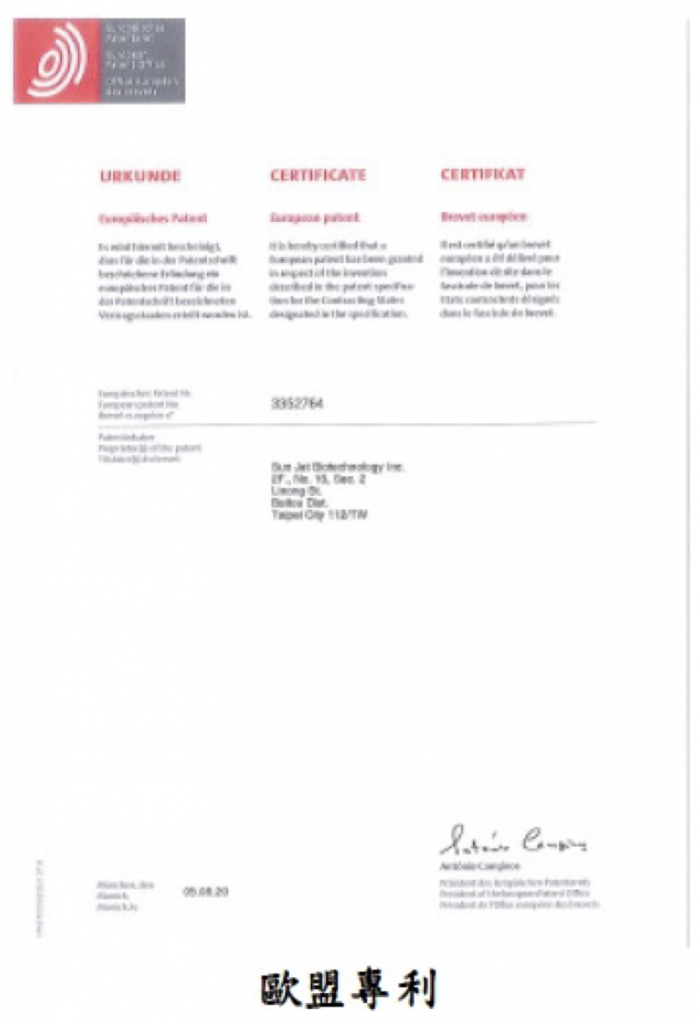龔思豪
Szu-Hao Kung

聯絡方式
☏ 02-28267034
學歷
南佛羅里達大學
微生物與免疫學 博士
國立陽明大學
醫事技術 學士.
現職與經歷
國立陽明大學
醫學生物技術暨檢驗學系 副教授
國立陽明大學
醫學生物技術暨檢驗學系 助理教授
美國賓州大學
病理系 博士後研究
研究領域
腸病毒及冠狀病毒的致病機制及藥物開發。
人類腸病毒是小兒科的重要致病原。台灣地區在過去20餘年爆發了數波大小不一的腸病毒流行,而腸病毒71型則是造成重症的主要因子。然而,臨床上目前還沒有抗病毒藥治療腸病毒71型,而疫苗的發展僅侷限於腸病毒71型,其他型別的腸病毒則尚未有疫苗。因此,我們實驗室長期以來研究腸病毒的致病機制及開發抗腸病毒藥物。另外,新冠病毒的全球疫情雖已告一段落,但由於病毒持續突變,疫苗的功效因此會打折,現有的抗病毒藥有可能產生抗藥性,有賴持續研發抗病毒藥物。因此,我們也由從事抗腸病毒藥物的成果進一步開發廣效型的冠狀病毒藥物。總之目前實驗室有以下三個研究方向:
(A) 開發抗腸病毒藥物
本實驗室已經應用螢光共振能量轉移(fluorescence resonance energy transfer; FRET)的原理發展抗腸病毒藥物篩選平台,從兩個藥庫(drug library),各有1280個及800個小分子,篩選出數個具抑制腸病毒複製的化合物,部分藥物是美國食品藥物管理局批准,臨床上用於治療其他疾病的藥物,目前其中一個藥物idarubicin已經闡明其作用機制是選擇性結合到調控病毒轉譯的病毒核醣體內入位(internal ribosomal entry site),以抑制腸病毒的轉譯。另外,也發現數個抗憂鬱的臨床藥物能有效抑制腸病毒複製。由於這些臨床用藥的在人體的藥物動力學及安全性已經了解相當清楚,有利於舊藥新用,加速抗腸病毒藥物的發展。從這幾個新找到的藥物,發現其中有幾組三個臨床藥物的組合,可以在降低藥物濃度到1/10的狀況下,有效抑制腸病毒複製。該研究成果已經獲得本國、美國及歐盟專利。
(B) 開發抗冠狀病毒藥物
由於新冠病毒的高感染率及高罹病致死性,必須在第三生安等級(Biosafety level 3, BSL-3)的實驗室操作,限制了其研究。我們以兩個策略來突破研究障礙:
1. 利用同屬冠狀病毒科,序列及複製機制極相似的229E冠狀病毒株進行研究。229E株感染人類僅引起普通感冒,會自行痊癒,因此可在一般等級的第二生安等級(BSL-2)實驗室操作。
2. 使用偽病毒(Pseudovirus)系統。其外層包裹有新冠病毒棘(Spike)蛋白,可模擬新冠病毒進入細胞的過程,但感染細胞後無法完成複製,因此也可在第二生安等級實驗室操作,可用來篩選抑制新冠病毒進入細胞的藥物。 我們利用挑選抗腸病毒組合藥物專利的策略,目前已經發現數組臨床藥物的組合,可在極低濃度下有效抑制229E冠狀病毒株複製。我們將與國內的BSL-3實驗室洽談合作,評估確認這幾個有效的藥物組合抑制新冠病毒的效率,並且已經著手申請該研究成果的專利。
(C) 腸病毒及冠狀病毒活化細胞內鈣離子訊息傳導路徑及其調控病毒複製的機制
已知包括腸病毒及冠狀病毒等一些病毒,在感染寄主細胞後,會造成細胞質內鈣離子濃度上升,且這個現象是病毒複製所需要的。進一步研究指出細胞質內鈣離子來自於細胞內主要貯存鈣離子的內質網及來自於胞外環境,但其分子機制不明。由於鈣離子在細胞內外移動,或是在細胞內的胞器間及細胞質移動,是由許多鈣離子通道參與,而且鈣離子可調控許多訊息傳導路徑,以參與細胞增殖,細胞骨架(cytoskeleton)改變,細胞自體吞噬(autophagy)、細胞凋亡及形成發炎體(inflammasome)以調控免疫反應等細胞功能,許多病毒也藉著調控感染細胞內的鈣離子濃度以利病毒本身的複製及散佈。因此本實驗室著手研究腸病毒及冠狀病毒感染的細胞內鈣離子的移動,是(1)經由哪些鈣離子通道,(2)活化哪些細胞訊息傳導路徑,而有利於病毒本身的複製及散佈,造成病毒的致病性(pathogenesis)。闡明其作用機制,不但能更加瞭解腸病毒及冠狀病毒複製及致病的分子機轉,也因為許多鈣離子通道及訊息傳導路徑已經有臨床用藥,這也有助於開發藉由抑制鈣離子通道或鈣離子細胞訊息傳導路徑的廣效型抗病毒藥物。目前已發表腸病毒感染後產生鈣離子流動影響腸病毒複製之論文如下。

圖一、腸病毒71誘導細胞質內鈣離子(Ca²⁺)升高,透過活化儲存操作性鈣流(SOCE)與粒線體鈣離子流入影響病毒生命週期的機制模型。
腸病毒71的2B蛋白造成內質網(ER)中鈣離子的消耗,進而啟動了SOCE。在感染後6小時 (6 h p.i.),細胞質內鈣離子濃度上升,導致粒線體鈣離子中度增加,隨之促進粒線體電子傳遞鏈複合體(I至IV)的活性,並提高ATP的生成以供病毒複製使用。
在感染後12小時(12 h p.i.),粒線體鈣離子過量累積引發內在性凋亡途徑,促進病毒經由細胞凋亡釋放。AnCoA4與RR可降低細胞質及粒線體鈣離子的濃度,分別減少病毒的複製與釋放。Oligomycin則作用於粒線體複合體V(ATP合酶),從而抑制病毒複製。RR = ruthenium red. MCU = mitochondrial Ca2+ uniporter.
mBio (2025): e0371724.
專利
腸病毒71型組合藥物治療:


代表著作
Hsu BY, Tsai YH, Weng TC, Szu-Hao Kung*. 2025. Activation of store-operated calcium entry and mitochondrial respiration by enterovirus 71 is essential for efficient virus replication. mBio 16:e0371724.
Weng TC, Hsu BY, Szu-Hao Kung* 2025. Cepharanthine inhibits enterovirus entry by endolysosomal deacidification and exhibits protective activity in vivo. Antimicrob Agents Chemother doi:10.1128/aac.00764-25:e0076425.
Tseng KC, Hsu BY, Ling P, Lu WW, Lin CW and Szu-Hao Kung* (2022). Antidepressant sertraline is a broad-spectrum inhibitor of enteroviruses targeting viral entry through neutralization of endolysosomal acidification. Viruses. 8; 14 (1):109.
Chen KR, Yu CK, Kung SH, Chen SH, Chang CF, Ho TC, Lee YP, Chang HC, Huang LY, Lo SY, Chang JC, Ling P. (2018). Toll-like receptor 3 is involved in detection of enterovirus A71 infection and targeted by viral 2A protease. Viruses. 2018.10(12). E689.
Lu WW, Kung FY, Deng PA, Lin YC, Lin CW, Kung SH. (2017). Development of a fluorescence resonance energy transfer–based intracellular assay to identify novel enterovirus 71 antivirals. Arch. Virol. 162 (3): 713-720.
Lu CY, Chang YC, Hua CH, Chuang C, Huang SH, Kung SH, Hour MJ, Lin CW. (2017). Tubacin, an HDAC6 Selective Inhibitor, Reduces the Replication of the Japanese Encephalitis Virus via the Decrease of Viral RNA Synthesis. International Journal of Molecular Science 18(5):E954.
Hou HY, Lu WW, Wu KY, Lin CW, Kung SH (2016). Idarubicin is a broad-spectrum enterovirus replication inhibitor that selectively targets the virus internal ribosomal entry site. J Gen Virol. 97(5): 1122-33.
Syu BY, Chao YT, Ou PT, Kung SH*. The CMPTM inactive virus transport medium can inactivate human coronavirus. Journal of Testing and Quality Assurance, 2021: 10:53-59.
Wang CY, Huang AC, Hour MJ, Huang SH, Kung SH, C Chen CH, Chen IC, Chang YS, CW Lin (2015). Antiviral Potential of a Novel Compound CW-33 against Enterovirus A71 via Inhibition of Viral 2A Protease. Viruses. 7, 3155-3171.
SARS Coronavirus Papain-Like Protease Inhibits the TLR7 Signaling Pathway through Removing Lys63-Linked Polyubiquitination of TRAF3 and TRAF6. Li SW, Wang CY, Jou YJ, Huang SH, Hsiao LH, Wan L, Lin YJ, Kung SH, Lin CW. Int J Mol Sci. 2016 May 5;17(5):678.
Lu JR, Lu WW, Lai JZ, Tsai FL, Wu SH, Lin CW, Kung SH. (2013) Calcium flux and calpain-mediated activation of the apoptosis-inducing factor contribute to enterovirus 71-induced apoptosis. J Gen Virol. 94(7):1477-85.
Lu WW, Sun JR, SS Wu, Lin WH, Kung SH (2011). A dual reporter cell assay for identifying serotype and drug susceptibility of herpes simplex virus. Analytical Biochemistry. Aug 15;415(2):97-104.
Li SW, Lai CC, Ping JF, Tsai FJ, Wan L, Lin YJ, Kung SH, Lin CW. (2011). Severe acute respiratory syndrome coronavirus papain-like protease suppressed alpha interferon-induced responses through downregulation of extracellular signal-regulated kinase 1-mediated signalling pathways. Journal of General Virology. 92:1127-40.
Hsu YY, Liu YN, Lu WW, Kung SH. (2009). Visualizing and quantifying the differential cleavages of the eukaryotic translation initiation factors eIF4GI and eIF4GII in the enterovirus-infected cell. Biotechnol Bioeng. 104(6):1142-52.
Tsai MT, Cheng YH, Liu YN, Liao NC, Lu WW, Kung SH. (2009). Real-time monitoring of human enterovirus (HEV)-infected cells and anti-HEV 3C protease potency by fluorescence resonance energy transfer. Antimicrob Agents Chemother. 53(2):748-755.
Hsu YY, Liu YN, Wang W, Kao FJ, and Kung SH. (2007). In Vivo Dynamics of Enterovirus Protease Revealed by Fluorescence Resonance Emission Transfer (FRET) based on a novel FRET pair. Biochem Biophys Res Commun. 353, 939–945.
Kung SH, Wang SF, Huang CW, Hsu CC, Liu HF, Yang JY. (2007). Genetic and antigenic analyses of enterovirus 71 isolates in Taiwan during 1998-2005. Clin Microbiol Infect. 13(8):782-7.
Ghukasyan V, Hsu YY, Kung SH, Kao FJ. (2007). Application of fluorescence resonance energy transfer resolved by fluorescence lifetime imaging microscopy for the detection of enterovirus 71 infection in cells. J Biomed Opt. 12(2):024016.
Lu WW, Hsu YY, Yang JY, Kung SH. (2004). Selective inhibition of enterovirus 71 replication by short hairpin RNAs. Biochem Biophys Res Commun. 325(2):494-9.
1998-2002
Kuo YC, Lin LC, Tsai WJ, Chou CJ, Kung SH, Ho, YH.. Samarangenin B from Limonium sinense suppresses herpes simplex virus type 1 replication in Vero cells by regulation of viral macromolecular synthesis. Antimicrobial Agents and Chemotherapy 2002;46(9):2854-2864
Y-C Wang, C-L Kao, W-T Liu, J-R Sun, Y-E Tai, and Kung SH.. A Cell Line That Secretes Inducibly a Reporter Protein for Monitoring Herpes Simplex Virus Infection and Drug Susceptibility. Journal of Medical Virology 2002;68(4):599-605.
Kuo, RL, Kung, S.H., Hsu, YY, and Liu, WT. Infection with Enterovirus 71 or expression of its 2A protease induces apoptotic cell death. Journal of General Virology 2002;83:1367-1376.
Tai, H.Y., Sun, K.H., Kung, S.H., Liu, W.T. A quantitative assay for measuring human foamy virus using an established indicator cell line. Journal of Virological Methods 2001;94:155-162.
Liu, W.T., Sun, JR, Lin, CH, Kuo RL, and Kung SH.. An indicator cell assay for detection of human cytomegalovirus based on enhanced green fluorescent protein. Journal of Virological Methods 2001;96:85-92.
Kung, S.H., Wang, Y.C., Lin, C.H., Kuo, R.L., and Liu, W.T. Rapid diagnosis and quantification of herpes simplex virus with a green fluorescent protein reporter system. Journal of Virological Methods 2000;90:205-212.
Kung, S.H., Hagstrome, J.N., Cass, D., Tai, S.J., Lin, H.F., Stafford, D. and High K.A.. Human coagulation factor IX corrects the bleeding diathesis of mice with hemophilia B. Blood 1998;91:784-790.
Nakai, H., Herzog, R.H., Hagstrome, J.H., Walter, J.H., Kung, S.H., Yang, E.Y., Tai, S.H., Iwaki, Y., Kurtzman, G.J., Fisher,K.J., Colosi,P., Couto, L.B., and High, K.A.. Adeno-associated viral vector-mediated gene transfer of human blood coagulation factor IX into mouse liver. Blood 1998;91:4600-4607.
Herzog, R.W., Hagstrome, J.N., Kung, S.H., Tai, S.J., Wilson, J.M., Fisher, K. J., and High, K.A. Stable gene transfer and expression of human blood coagulation factor IX after intramuscular injection of recombinant adeno-associated virus. Proceedings of the national academy of sciences of the United States of America 1997;94:5804-5809.
Kung, S.H. and Medveczky, P. Identification of a Herpesvirus saimiri cis-acting DNA fragment that permits stable replication of episomes in transformed T cells. Journal of Virology 1996;70:1738-1744.
